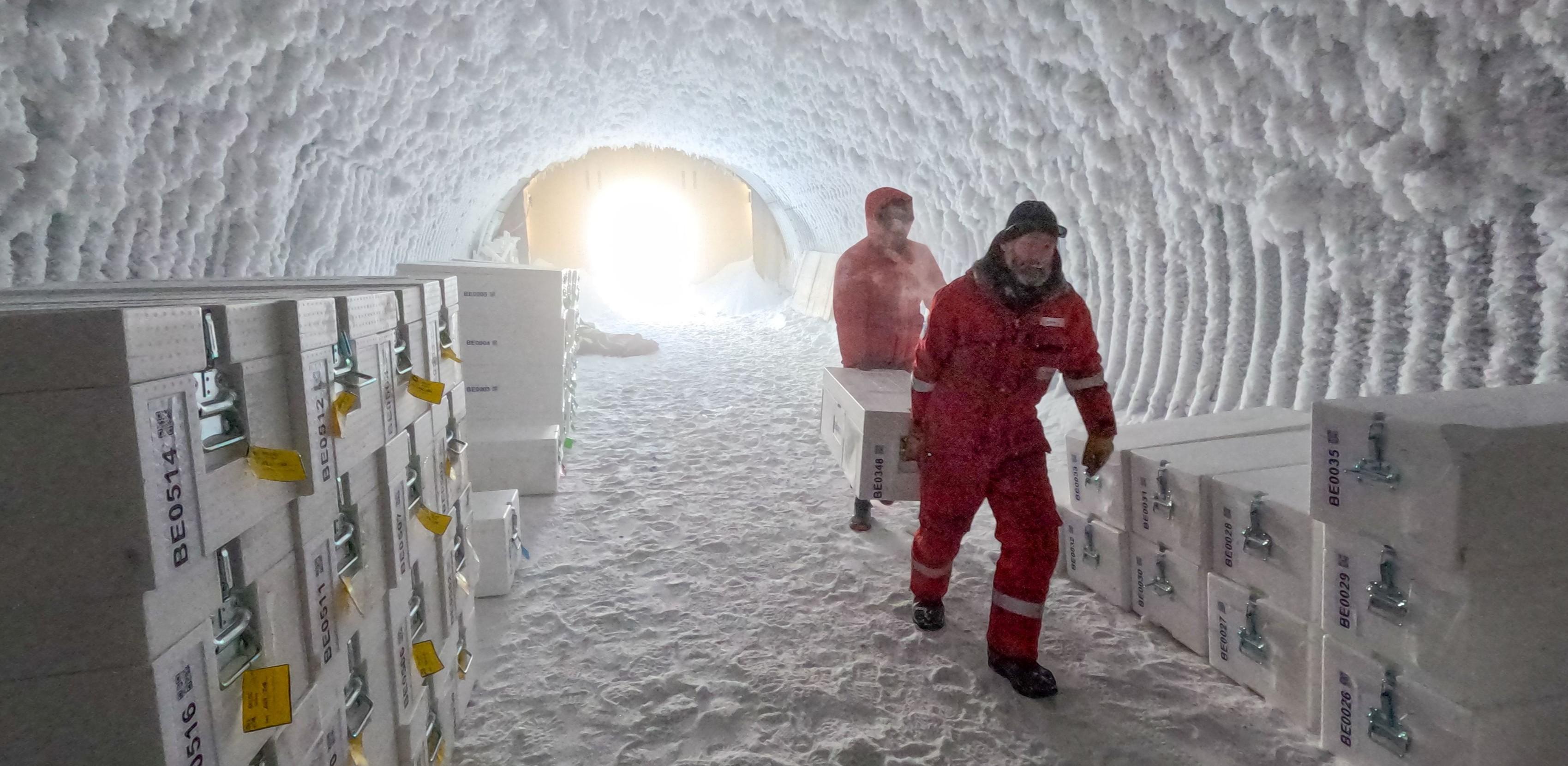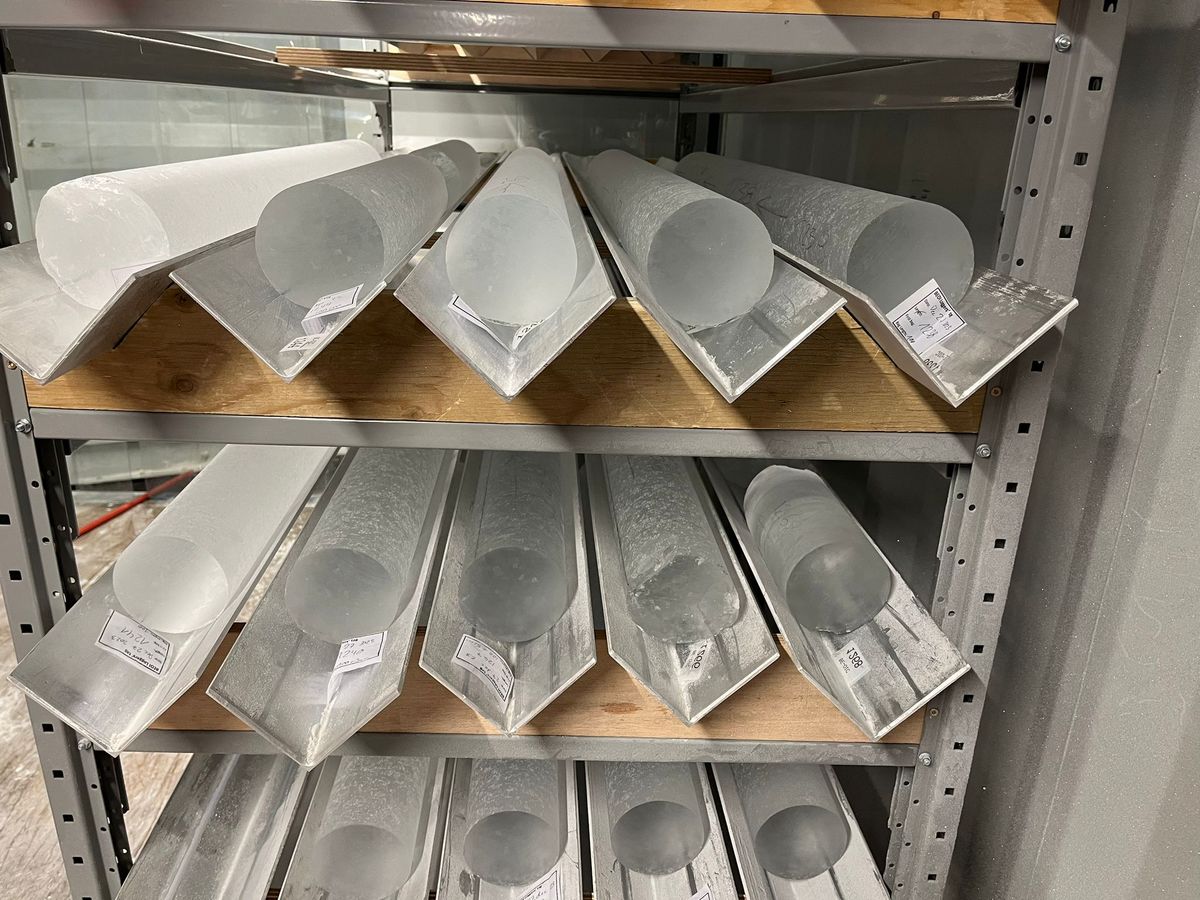
Submitted by Dr C.M. Martin-Jones on Thu, 09/01/2025 - 15:11
The fourth Antarctic campaign of the Beyond EPICA-Oldest Ice programme has achieved a historic milestone for climate science, by drilling a 2,800-meter-long ice core to the bedrock beneath the Antarctic ice sheet. The ice core is expected to extend back beyond 1.2 million years.
An international team of researchers undertook the drilling campaign at the remote 'Little Dome C' location. The project, which includes experts from twelve scientific institutes in ten European countries, was funded by the European Commission and supervised by the CNR's Institute of Polar Sciences (National Research Council of Italy).
Scientists hope the ice samples will reveal, for the first time, a continuous record of Earth's climatic and atmospheric past spanning 1.2 million years and maybe beyond.
The ice core contains information on historical atmospheric temperatures, as well as trapped air bubbles that preserve a record of greenhouse gases through time.
These details, with other data, will allow scientists to gather a clearer picture of Earth’s past, and help them understand how and why large shifts have occurred in the climate record.
“This is the longest continuous record of our past climate from an ice core, and it can reveal the interlinks between the carbon cycle and temperature of our planet,” said Carlo Barbante, professor at Ca' Foscari University of Venice, senior associate member of the Institute of Polar Sciences of the National Research Council of Italy (Cnr-Isp) and coordinator of Beyond EPICA.
“This achievement was made possible through the extraordinary collaboration of various European research institutions and the dedicated work of scientists and logistical personnel in the field over the last ten years.”
Ice core scientists Eric Wolff and Rachael Rhodes from Cambridge’s Department of Earth Sciences are involved in the project.
"After a decade of planning it is really exciting to finally have ice going back well beyond a million years,” said Wolff, who chaired the science committee of the original European Polar Ice Coring in Antarctica (EPICA) programme and was involved in the conception and planning of the current project.
The field team spent more than two hundred days drilling and processing the ice core across four field seasons in the harsh environment of the central Antarctic plateau. At an altitude of approximately 3,200 metres (around 10,500 feet) above sea level, and an average summer temperature of -35°C, sustained work at Little Dome C has been tough for the team, but necessary.
Ice cores in storage, credit PNRA / IPEV
The oldest ice, just above the bedrock, is heavily deformed, possibly mixed or refrozen, and of unknown origin. It is hoped that advanced analysis of this segment could help test previous theories about the behaviour of refrozen ice under the Antarctic ice sheet and reveal East Antarctica’s glaciation history. There is even potential for yet older ice, dating back to the pre-Quaternary period (2.58 million years ago) to be discovered within these base sections of the core. Dating of the rocks underlying the drilled core may determine exactly when this region of Antarctica was ice-free for the last time.
Commenting on the campaign’s success, Cambridge’s Rachael Rhodes said, “this is a huge achievement and testament to the hard work and skill of the field teams involved in site selection, drilling, and core processing over the past 8 Antarctic seasons. I’m excited to get this extraordinary ice safely back to Europe so that we can begin unlocking its secrets.”
The 2800-metre ice core samples will now be transported carefully to Europe using specialised cold containers, maintained under a strict logistics strategy.
“Once the ice is analysed, the data will give us a much better picture of how and why Earth’s climate has varied over the past 1.2 million years, and even beyond,” said Wolff.
Wolff added that the new data will complement emerging information from marine sediment cores collected by Cambridge Earth Science’s David Hodell and colleagues in the Godwin Laboratory. These marine cores, originating from the Iberian Margin, off the coast of Portugal, contain climate signals that can be linked to the polar ice to understand interactions between ocean and atmosphere through time.
Participants in the 2024/2025 campaign: Université Libre de Bruxelles (BE): Lisa Ardoin; University of Bern (CH): Barbara Seth and Lison Soussaintjean; AWI (DE): Matthias Hüther, Manuela Krebs, Gunther Lawer, Johannes Lemburg, Martin Leonhardt, and Frank Wilhelms; University of Copenhagen (DK): Julien Westhoff; CNRS (FR): Marie Bouchet and Ailsa Chung; IPEV (FR): Inès Gay; ENEA (IT): Danilo Collino and Michele Scalet; Cnr-Isp (IT): Federico Scoto.
Learn more about the Beyond EPICA – Oldest Ice project here
Adapted from a British Antarctic Survey press release here.
Feature image: Credit PNRA / IPEV

